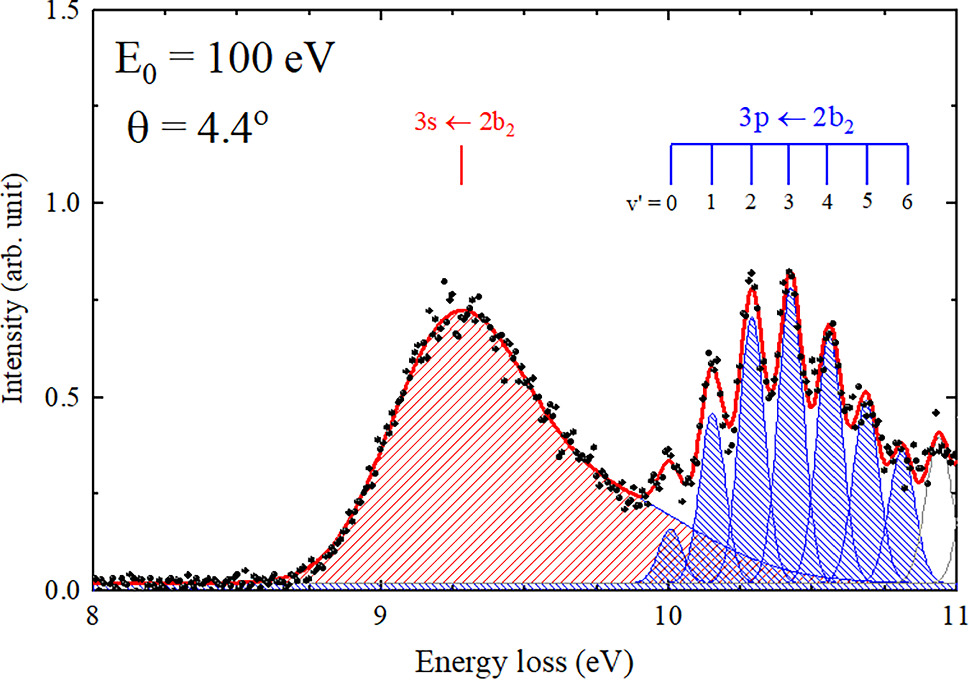https://doi.org/10.1140/epjd/s10053-025-01028-4
Regular Article - Atomic and Molecular Collisions
Quantitative measurement of the excitation cross section for the lowest-lying optically allowed transitions in difluoromethane molecules by electron impact: verification of the BE-scaled cross section in the intermediate-energy region
1
Department of Materials and Life Sciences, Sophia University, 102-8554, Tokyo, Japan
2
Tokyo Electron Technology Solutions Limited, 650 Mitsuzawa, Hosaka-cho, 407-0192, Nirasaki, Yamanashi, Japan
Received:
23
April
2025
Accepted:
10
June
2025
Published online:
28
June
2025
We report on the absolute excitation cross sections of the lowest-lying optically allowed transitions in difluoromethane (CH2F2) molecules at intermediate impact energies between 100 and 400 eV and for scattering angles of 1.5° to 15°. The energy loss ranges from 8.5 to 11 eV, which has been assigned as the optically allowed 3s ← 2b2 and 3p ← 2b2 overlapping with the dipole-forbidden 11A2 ← X1A1 excitations. The absolute scale of the corresponding cross sections is obtained by normalizing the angular distributions of inelastically scattered electrons to the absolute excitation differential cross section (DCS) of He as the reference. The excitation integral cross sections (ICSs) for these excitations obtained by the generalized oscillator strength analysis are in reasonable agreement with the corresponding BE-scaled ICSs derived recently at an impact energy of 1500 eV within the experimental uncertainties. The absolute measurement suggested that the BE-scaling law is experimentally confirmed to be quite useful for CH2F2 molecules even at intermediate electron energies.
Copyright comment Springer Nature or its licensor (e.g. a society or other partner) holds exclusive rights to this article under a publishing agreement with the author(s) or other rightsholder(s); author self-archiving of the accepted manuscript version of this article is solely governed by the terms of such publishing agreement and applicable law.
© The Author(s), under exclusive licence to EDP Sciences, SIF and Springer-Verlag GmbH Germany, part of Springer Nature 2025
Springer Nature or its licensor (e.g. a society or other partner) holds exclusive rights to this article under a publishing agreement with the author(s) or other rightsholder(s); author self-archiving of the accepted manuscript version of this article is solely governed by the terms of such publishing agreement and applicable law.





